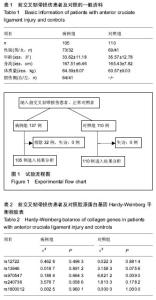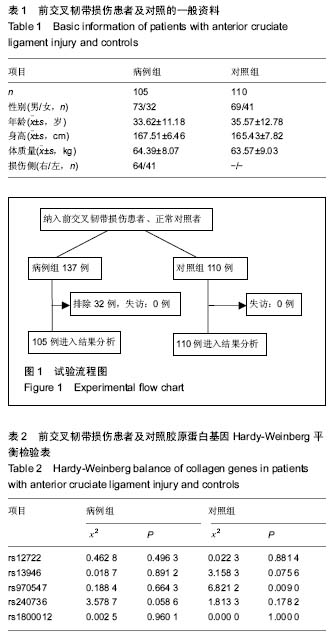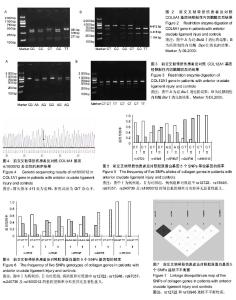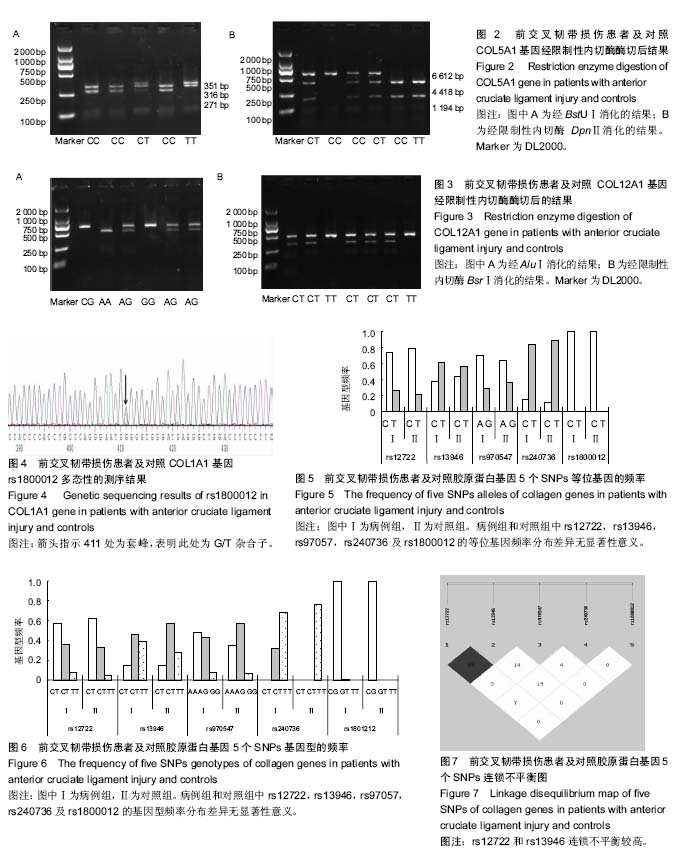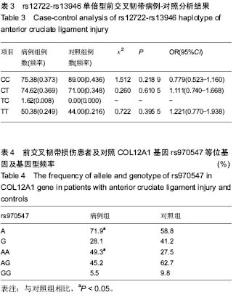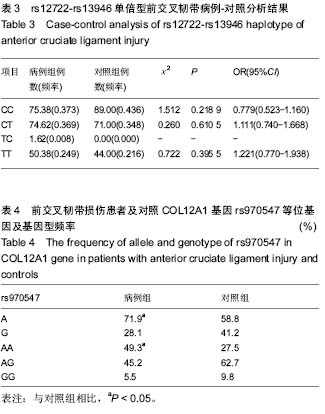| [1] 敖英芳,田得祥,崔国庆,等.运动员前交叉韧带损伤的流行病学研究[J].体育科学,2000,20(4):47-48.[2] 王建,敖英芳. 前交叉韧带损伤的临床流行病学研究[J].中国运动医学杂志,2001,20(4):380-382.[3] Bahr R, Krosshaug T. Understanding injury mechanisms: a key component of preventing injuries in sport. Br J Sports Med. 2005;39(6):324-329.[4] Khoschnau S, Melhus H, Jacobson A, et al. Type I collagen alpha1 Sp1 polymorphism and the risk of cruciate ligament ruptures or shoulder dislocations. Am J Sports Med. 2008; 36(12):2432-2436. [5] Posthumus M, September AV, O'Cuinneagain D, et al. The COL5A1 gene is associated with increased risk of anterior cruciate ligament ruptures in female participants. Am J Sports Med. 2009;37(11):2234-2240. [6] Posthumus M, September AV, O'Cuinneagain D, et al. The association between the COL12A1 gene and anterior cruciate ligament ruptures. Br J Sports Med. 2010;44(16):1160-1165. [7] Shi YY, He L. SHEsis, a powerful software platform for analyses of linkage disequilibrium, haplotype construction, and genetic association at polymorphism loci. Cell Res. 2005; 15(2):97-98.[8] Griffin LY, Agel J, Albohm MJ, et al. Noncontact anterior cruciate ligament injuries: risk factors and prevention strategies. J Am Acad Orthop Surg. 2000;8(3):141-150.[9] Smith IK. On bended knee. More girls are tearing ligaments in their knees. Here's what they can do to prevent it. Time. 2000; 156(20):120.[10] Griffin LY, Albohm MJ, Arendt EA, et al. Understanding and preventing noncontact anterior cruciate ligament injuries: a review of the Hunt Valley II meeting, January 2005. Am J Sports Med. 2006;34(9):1512-1532.[11] Flynn RK, Pedersen CL, Birmingham TB, et al. The familial predisposition toward tearing the anterior cruciate ligament: a case control study. Am J Sports Med. 2005;33(1):23-28.[12] Myllyharju J, Kivirikko KI. Collagens and collagen-related diseases. Ann Med. 2001;33(1):7-21.[13] Solomon E, Hiorns LR, Spurr N, et al. Chromosomal assignments of the genes coding for human types II, III, and IV collagen: a dispersed gene family. Proc Natl Acad Sci U S A. 1985;82(10):3330-3334.[14] 夏欣一,崔英霞,杨滨,等.Ⅰ型胶原基因突变与成骨不全研究进展[J].中国优生与遗传杂志,2009,17(5):12-13.[15] 朱玉方,庞琦.胶原蛋白基因与颅内动脉瘤形成的关系[J].中国脑血管病杂志,2008,5(5):233-236.[16] Birk DE. Type V collagen: heterotypic type I/V collagen interactions in the regulation of fibril assembly. Micron. 2001; 32(3):223-237.[17] Posthumus M, September AV, Keegan M, et al. Genetic risk factors for anterior cruciate ligament ruptures: COL1A1 gene variant. Br J Sports Med. 2009;43(5):352-356. [18] Mann V, Hobson EE, Li B, et al. A COL1A1 Sp1 binding site polymorphism predisposes to osteoporotic fracture by affecting bone density and quality. J Clin Invest. 2001; 107(7): 899-907.[19] Mokone GG, Schwellnus MP, Noakes TD, et al. The COL5A1 gene and Achilles tendon pathology. Scand J Med Sci Sports. 2006;16(1):19-26.[20] St?pien-S?odkowska M, Ficek K, Eider J, et al. The +1245g/t polymorphisms in the collagen type I alpha 1 (col1a1) gene in polish skiers with anterior cruciate ligament injury. Biol Sport. 2013;30(1):57-60. |
